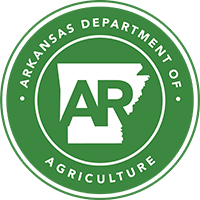Natural Resources
Efficiently and responsibly managing and protecting our water and land resources for the sustainability, health, safety, and economic benefit of the State of Arkansas
Agriculture / Natural Resources / Divisions / Water Management / Floodplain Management / Floodplain Maps
Floodplain Maps
FEMA floodplain maps, known as Flood Insurance Rate Maps (FIRMs), show areas of high and moderate to low flood risk. These maps are used to set minimum building requirements and to determine flood insurance requirements and rates.
Flood Risk and Flood Zones
HIGH RISK: SPECIAL FLOOD HAZARD AREA
High risk areas are identified as a Special Flood Hazard Area [SFHA] on FEMA maps. SFHAs are labeled as Zones A, AE, AH, AO, or AR. A property in a SFHA has a 26 percent chance of experiencing a flood during the lifetime of a 30–year mortgage. If a property is located in the SFHA, flood insurance will be required for federally backed mortgages. These floodplain areas are also subject to specific regulations which provide guidance to minimize potential flood risk.
MODERATE RISK
Moderate flood hazard areas, labeled Zone B or Zone X (shaded) are also shown on the FIRM. These zones include the areas outside the SFHA, but within the 500-year flood event. A property at moderate risk has nearly a 6% chance of flooding over a 30-year mortgage.
LOW RISK
Moderate to low risk flood zones account for more than 20 percent of National Flood Insurance Program claims. The areas of low risk or minimal flood hazard are labeled Zone C or Zone X (unshaded). Low Risk areas do not mean that a property is safe from flooding! Moderate to low risk flood zones account for more than 20 percent of National Flood Insurance Program claims.
Where to Find Your Floodplain Map
The FEMA Flood Map Service Center (MSC) is the official public source for flood hazard information produced in support of the National Flood Insurance Program (NFIP). Use the MSC to find your official flood map, access a range of other flood hazard products, and take advantage of tools for better understanding flood risk. Find your map at the Map Service Center. Maps may also be viewed online at FEMA's National Flood Hazard Layer (NFHL) Viewer. .
Download How to View the Floodplain Maps Using the NFHL and How to View the Floodplain Maps Using the Map Service Center for help using these websites.
What Can Be Found on Flood Maps
To prepare or update the Flood Maps that graphically illustrate the flood hazards and related risks in a floodprone community, FEMA generally has conducted engineering studies referred to as Flood Insurance Studies, or FISs. The FISs are more commonly referred to simply as studies or mapping projects.
Using the information gathered in these studies, FEMA contractors and mapping partners present flood hazard and risk information on the Flood Maps and accompanying FIS reports. The mapping partners involved include State agency, regional agency, and local community and Indian Tribal entity partners participating in the FEMA Cooperating Technical Partners, or CTP, Program.
Several areas of flood hazard hazard are shown on Flood Maps. One of these areas is the Special Flood Hazard Area, or SFHA, a high-risk area defined as any land that would be inundated by a flood that has a 1-percent chance of occurring during any given year. This type of flood commonly is often referred to as the “100-year flood” or as the “base flood.” This flood is not a flood that occurs every 100 years. In fact, this flood has a 26-percent chance of occurring during a 30-year period…the length of many mortgages.
Regulated lending institutions must determine whether a borrower’s building is located in an SFHA and require the purchase of flood insurance if it is. About 25 percent of insurance claims paid under the NFIP are in areas outside the high-risk SFHAs, where consumers may voluntarily purchase flood insurance.
The SFHA standard constitutes a reasonable compromise between the need for building restrictions to minimize potential loss of life and property and the economic benefits to be derived from development in these areas. Development may take place within the SFHA, provided that the development complies with local floodplain management ordinances, which must meet the minimum Federal requirements In addition to SFHAs, a variety of information can be found on most Flood Map, including:
- Common physical features, such as major highways, secondary roads, lakes, railroads, streams, and other waterways;
- Base (1-percent-annual-chance) flood elevations, or BFEs, and/or base (1-percent-annual-chance) flood depths;
- Flood insurance risk zone designations, which are provided on the Flood Map to assist users in determining flood insurance premium rates for properties in the community;
- Moderate-risk areas subject to inundation by the 0.2-percent-annual-chance flood, which is often referred to as the “500-year flood” in some FEMA publications; and
- Low-risk areas outside the area inundated by the 0.2-percent-annual-chance flood.
The Flood Map for a community may also show areas designated as regulatory floodways, which are defined as the channel of a stream, plus any adjacent floodplain areas, that must be kept free of encroachment so that the 1-percent-annual-chance flood discharge can be conveyed without increasing the BFEs more than a specified amount.
How Flood Maps Can Help
Flood Maps provide information that allows community officials, citizens, and other map users to:
- Identify high-risk areas (SFHAs), moderate-risk areas, and minimal-risk areas;
- Identify the location of a specific property or structure in relation to the SFHA boundary, the regulatory floodway boundary, and the moderate-risk area boundary;
- Identify the BFE or base flood depth at a specific site;Identify the extent of flood hazards in a specific area;Locate regulatory floodways;and
- View the locations of common physical features, such as major highways, secondary roads, lakes, railroads, streams, and other waterways.

